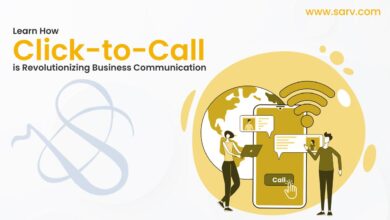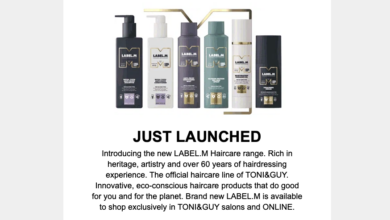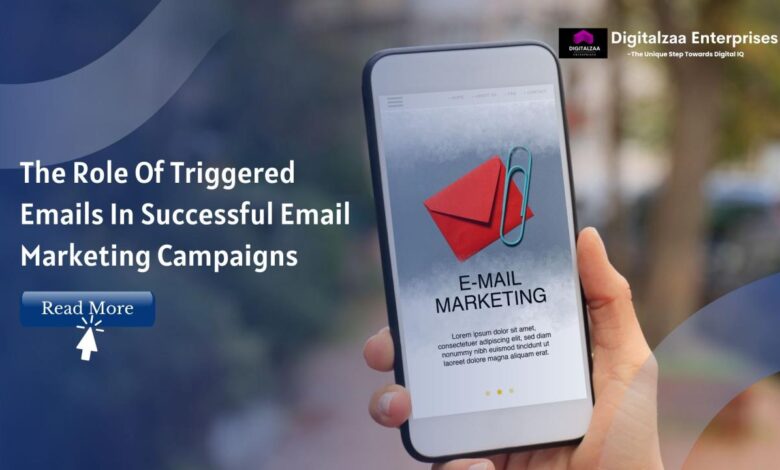
Why Behaviorally Triggered Emails Are Critical
Why behaviorally triggered emails are critical in today’s marketing landscape. They’re not just another email tactic; they’re a powerful tool for boosting engagement, driving conversions, and creating truly personalized customer experiences. This in-depth exploration dives into the specifics of these targeted messages, from their design and implementation to their impact on key marketing metrics.
Behaviorally triggered emails, unlike generic blasts, are activated by specific user actions. Imagine a customer browsing your website and adding items to a cart, but then abandoning the purchase. A behaviorally triggered email, sent moments later, can remind them of their items and encourage them to complete the checkout. These emails are not just reactive, they’re proactive. They understand and respond to individual customer behavior, fostering stronger relationships and driving higher conversion rates.
This level of personalized interaction is crucial in today’s competitive market, setting the stage for increased customer satisfaction and loyalty.
Defining Behaviorally Triggered Emails
Behaviorally triggered emails represent a significant advancement in email marketing, moving beyond the static, one-size-fits-all approach. They dynamically adapt to user actions, providing highly personalized and relevant communications. This targeted approach significantly improves engagement and conversion rates by delivering messages at the precise moment when recipients are most receptive.These emails are carefully crafted to respond to specific user behaviors, providing information or offers that are timely and pertinent to the recipient’s needs.
This tailored approach is a powerful tool for businesses seeking to nurture leads, improve customer retention, and ultimately drive sales.
Understanding the Concept
Behaviorally triggered emails are emails automatically sent in response to a specific action taken by a user on a website or app. These emails differ from other email types in their reactive nature and personalization. Unlike promotional emails sent to a broad audience, or transactional emails focused on order confirmations, behaviorally triggered emails are triggered by an action performed by a specific recipient.
Behaviorally triggered emails are essential for boosting conversions. They’re like having a personal shopper who understands your customer’s needs. A great example of this is Olivia Tsang, marketing manager at Supermoney, Olivia Tsang marketing manager supermoney , who expertly uses these emails to nurture leads and drive sales. Ultimately, these targeted messages enhance customer experience and significantly improve ROI.
Key Characteristics of Behaviorally Triggered Emails
These emails are characterized by their dynamic nature, responding instantly to user actions. This immediacy creates a sense of personalized attention, making the recipient feel understood and valued. The following are key characteristics:
- Dynamic Delivery: Emails are sent based on a predefined trigger, ensuring the message is delivered at the optimal time. This proactive approach increases the chances of engagement.
- Personalization: Behaviorally triggered emails are customized to the individual recipient, taking into account their specific behavior and preferences. This personalization enhances relevance and increases user engagement.
- Improved Engagement: By delivering content precisely when needed, these emails foster a stronger connection with the recipient, improving engagement and prompting desired actions.
- Enhanced Conversion Rates: The precision of behaviorally triggered emails directly impacts conversion rates. The right message at the right time often leads to higher conversion rates compared to generic campaigns.
Triggers for Behaviorally Triggered Emails
Various triggers can initiate these emails, enabling marketers to respond to a range of user actions. These triggers enhance the effectiveness of the email campaigns.
- Abandoned Cart: A common trigger, prompting the user to complete their purchase. This is a powerful way to recover lost sales.
- Product View: Sending information or offers on a product a user has expressed interest in can increase engagement.
- Account Creation: Welcome emails or account setup guides are triggered when a user creates an account.
- Download Request: Sending relevant information or offers after a user downloads a resource is a way to build relationships and gather valuable information about user preferences.
- Customer Support Request: Triggering automated support responses to inquiries helps address customer needs quickly and efficiently.
Comparison with Other Email Types
The table below contrasts behaviorally triggered emails with promotional, transactional, and other email types.
Behaviorally triggered emails are key to boosting engagement. They’re like a personalized, automated assistant, sending the right message at the right time. To ensure these emails are effective, you need a well-structured content calendar. Planning your email content, like you would any other content, with a clear strategy in place (check out how to create a content calendar ), is essential.
Ultimately, this strategic approach to content creation is what fuels highly effective behaviorally triggered emails, maximizing conversions and boosting customer satisfaction.
| Feature | Behaviorally Triggered | Promotional | Transactional |
|---|---|---|---|
| Trigger | User action (e.g., abandoned cart, product view) | Scheduled time/campaign | Order completion, account update |
| Goal | Encourage specific action (e.g., completing purchase, revisiting product) | Increase brand awareness, drive sales | Confirm transaction, provide updates |
Benefits of Using Behaviorally Triggered Emails
Behaviorally triggered emails are no longer a futuristic marketing concept; they’re a powerful tool for modern businesses. They allow marketers to send highly personalized and relevant messages at the precise moments when customers need them most, fostering deeper engagement and ultimately, driving better conversion rates. This proactive approach to email marketing moves beyond generic blasts, recognizing that different customer actions warrant different responses.By understanding customer behavior, marketers can tailor communications to resonate more deeply with individual needs and preferences, leading to a more positive and efficient customer journey.
This dynamic approach not only improves marketing metrics but also significantly enhances the overall customer experience.
Improved Marketing Metrics
Understanding customer behavior through their actions allows marketers to fine-tune email campaigns for maximum impact. This leads to noticeable improvements in key marketing metrics. A crucial aspect is optimizing for the customer journey, moving beyond simple interactions to truly understanding customer needs and motivations.
- Increased Open Rates: Behaviorally triggered emails are more likely to be opened because they’re highly relevant to the recipient. For example, a customer who abandoned a shopping cart receives an email reminding them of the items. This personalized approach increases engagement, resulting in higher open rates.
- Higher Click-Through Rates: When emails are relevant, customers are more inclined to click on links within them. For instance, a customer who expresses interest in a particular product line receives targeted emails with similar items, increasing the likelihood of them clicking through to explore further.
- Enhanced Conversion Rates: By delivering timely and relevant information, behaviorally triggered emails can significantly improve conversion rates. Imagine a customer who downloads a product brochure. A follow-up email offering a discount or exclusive access to a webinar can encourage them to make a purchase.
Enhanced Customer Experience and Engagement
Behaviorally triggered emails facilitate a more seamless and engaging customer experience. This proactive approach shifts from simply sending emails to creating a responsive and valuable customer journey.
- Personalized Interactions: By tailoring messages based on specific actions, businesses can foster a more personalized relationship with customers. This proactive personalization creates a sense of understanding and responsiveness that resonates with customers.
- Proactive Support: A user who experiences an error on a website can receive an immediate email providing support or guidance. This personalized assistance helps maintain a positive customer experience.
- Improved Customer Retention: Regular and relevant communication fosters stronger customer relationships. Customers feel valued when their needs are anticipated and addressed, which significantly improves retention.
Improved Personalization and Relevance
Behaviorally triggered emails are intrinsically designed for personalization. By understanding customer actions, marketers can create tailored experiences that address individual needs and preferences.
- Targeted Content: Customers who express interest in a specific product category receive emails showcasing similar items. This targeted approach ensures that the content aligns with customer preferences, increasing relevance.
- Dynamic Content: Emails adapt based on customer actions and preferences. For example, an email can dynamically adjust the product recommendations based on past purchases.
- Enhanced Customer Understanding: By analyzing customer behavior, businesses gain valuable insights into their preferences and needs. This allows them to create more relevant and effective marketing campaigns.
Reduced Email Bounce Rates
Behaviorally triggered emails are designed to reduce email bounce rates by focusing on relevant communication. The strategy minimizes the likelihood of irrelevant or unwanted emails being sent.
- Targeted Delivery: Emails are sent only when a specific action occurs, ensuring that the recipient is genuinely interested in the content. This reduces the risk of irrelevant messages reaching the inbox.
- Reduced Unsubscribes: Highly relevant messages are less likely to be perceived as spam or unwanted, leading to a reduction in unsubscribes. This proactive approach helps maintain a strong customer base.
Strategies for Designing Effective Behaviorally Triggered Emails
Behaviorally triggered emails, unlike generic blasts, are crafted to resonate with specific user actions. This targeted approach increases engagement and conversions by addressing user needs at precisely the right moment. Effective design is key to maximizing the impact of these personalized communications.The key to successful behaviorally triggered emails lies in understanding the user’s journey and tailoring the message to their specific needs and interests.
This requires a delicate balance between automation and personalization, ensuring the email feels authentic and relevant rather than impersonal or spammy.
Behaviorally triggered emails are key to boosting engagement. They’re essentially emails that pop up at precisely the right moment, based on a user’s actions. A great example of this in action is Matt Carrington, CMO of Athletic Greens, matt carrington cmo athletic greens , who expertly uses this strategy to maximize conversions. Ultimately, these emails provide a personalized touch, driving higher conversion rates and customer satisfaction.
Crafting Compelling Subject Lines, Why behaviorally triggered emails are critical
Subject lines are the first impression. A compelling subject line is crucial for driving user engagement and encouraging clicks. It should accurately reflect the email’s content and entice the recipient to open it. Avoid generic subject lines; instead, focus on highlighting the value proposition for the user.
Trigger Types and Corresponding Subject Lines
| Trigger | Subject Line Example |
|---|---|
| Abandoned Cart | “Don’t lose out! Finish your purchase now!” |
| New Signup | “Welcome! Explore our products!” |
| Recent Purchase | “Related products you might like!” |
| Account Login | “Welcome Back! Ready to explore?” |
| Product View | “Still thinking about [Product Name]? Check out details!” |
Personalizing Content
Personalization is vital for driving engagement. Use data collected from user behavior to tailor the email’s content. If a user has viewed specific products, highlight those products in the email. This demonstrates that you understand their interests and needs, leading to higher conversion rates.
Product Recommendations and Offers
Relevant product recommendations or targeted offers increase the likelihood of a purchase. When a user views a particular product, suggest related items or products that complement their choice. Consider offering discounts or promotions for related items to encourage cross-selling.
Clear Call-to-Actions (CTAs)
Clear and concise CTAs are essential for guiding users towards the desired action. Use action-oriented language, such as “Shop Now,” “Learn More,” or “Get Your Discount.” The CTA should be prominent and easily visible within the email. Test different CTA options to determine what works best for your target audience.
Optimizing for Various Devices
Mobile optimization is critical. Ensure emails render correctly on various devices, such as mobile phones and tablets. Responsive email design is essential for providing a seamless user experience across different platforms. Avoid cluttered layouts and prioritize essential information. This ensures your emails are easily digestible and engaging for all users.
Examples of Behaviorally Triggered Email Campaigns
Behaviorally triggered emails are not just a marketing tactic; they’re a powerful tool for enhancing customer engagement and driving conversions. By responding to specific actions and behaviors, these emails personalize the customer journey, making it more relevant and effective. Understanding successful campaigns provides valuable insights into crafting your own strategies.
Real-World Examples of Successful Campaigns
These examples demonstrate how behaviorally triggered emails can significantly improve key performance indicators (KPIs). They showcase the power of tailoring messages to specific customer actions.
- Abandoned Cart Recovery: A common trigger is a user adding items to their online shopping cart but not completing the purchase. A behaviorally triggered email, sent 30 minutes after the user leaves the cart, reminding them of the items and offering a discount or free shipping, can significantly increase conversion rates. For example, a clothing retailer noticed a 15% increase in conversions for customers who received this type of email.
This demonstrates how a seemingly small intervention can lead to substantial results.
- Product Interest Follow-Up: Customers who spend a considerable amount of time browsing a specific product category often signal a strong interest. A behaviorally triggered email showcasing similar or related products, along with exclusive offers, can lead to higher engagement and sales. An electronics retailer observed a 10% increase in sales of related products after sending such emails to users who spent more than 5 minutes researching a specific smartphone model.
- Welcome Series: After a new user subscribes to a newsletter or signs up for an account, a series of triggered emails can guide them through the platform. This series can offer valuable product information, company updates, or exclusive content. A software company saw a 20% increase in user engagement after implementing a multi-part welcome email sequence that introduced key features and provided access to helpful tutorials.
- Post-Purchase Engagement: After a customer completes a purchase, triggered emails can be used to encourage repeat purchases or solicit feedback. For example, an online bookstore might send an email recommending similar books based on the customer’s previous purchase. Such emails often lead to a higher lifetime value for the customer, as they’re nudged toward additional purchases.
Case Study: Abandoned Cart Recovery Campaign
A successful example of an abandoned cart campaign comes from an online retailer specializing in home décor. They observed that a significant number of users were adding items to their cart but abandoning the purchase process. To address this, they implemented a behaviorally triggered email campaign. This campaign sent a reminder email 30 minutes after a user left the cart.
This email included a personalized message reminding the user of the items in their cart, a discount code, and a direct link to complete the purchase. The campaign resulted in a 15% increase in conversion rates for abandoned carts, a significant improvement in revenue.
Campaign Summary Table
| Campaign Type | Trigger | Key Metric Improvement |
|---|---|---|
| Abandoned Cart Recovery | Viewed item in cart for 30 minutes | 15% increase in conversions |
| Product Interest Follow-Up | Spent 5+ minutes browsing a product category | 10% increase in related product sales |
| Welcome Series | New user account signup | 20% increase in user engagement |
| Post-Purchase Engagement | Completed purchase | Increased customer lifetime value |
Challenges and Considerations
Implementing behaviorally triggered email campaigns, while offering significant potential, presents several hurdles. Successfully navigating these challenges is crucial for achieving desired results and maintaining a positive subscriber experience. Overlooking these considerations can lead to decreased engagement, damage to brand reputation, and ultimately, diminished ROI.
Data Privacy and User Consent
Data privacy and user consent are paramount when implementing behaviorally triggered emails. Collecting and utilizing data requires transparent communication with subscribers regarding how their information will be used. Obtaining explicit consent for data collection and use, aligning with industry best practices and legal regulations, is critical. This includes clearly outlining what data is collected, how it’s used for triggering emails, and providing opt-out options.
A lack of transparency or non-compliance with privacy regulations can lead to negative consequences, including reputational damage and legal action.
Managing Email Frequency
Excessive email frequency can quickly overwhelm subscribers and lead to unsubscribes. Behaviorally triggered emails, if not carefully managed, can contribute to this issue. A key consideration is understanding subscriber behavior and adjusting email frequency accordingly. Subscribers who engage deeply with a product or service may receive more emails, while those showing less engagement might receive fewer or tailored emails.
Analyzing engagement metrics to personalize email frequency is crucial to avoid overwhelming subscribers. This involves monitoring open rates, click-through rates, and unsubscribe rates to refine email frequency based on individual subscriber interaction.
Preventing Over-Personalization
While personalization is vital for engagement, over-personalization can be intrusive and create a negative user experience. A balance is essential to avoid overwhelming subscribers with overly specific and irrelevant content. Overly personalized content can appear intrusive, suggesting that a brand knows too much about a user. Instead of attempting to anticipate every need, focus on delivering value through relevant content.
This might involve grouping subscribers based on shared behavior and preferences, allowing for tailored experiences within larger segments.
Avoiding Intrusive or Unwanted Emails
Creating behaviorally triggered emails that are perceived as intrusive or unwanted is a significant risk. Emails should not be triggered simply because a user visited a specific page or engaged in a specific action, but rather, should be relevant and valuable to the user. Triggering emails based on irrelevant actions or at inappropriate times can lead to frustration and negative brand perception.
It’s important to consider the context of user actions and to ensure the triggered emails align with their interests and needs. Focusing on value delivery rather than simply responding to every action ensures a positive subscriber experience.
Future Trends in Behaviorally Triggered Emails
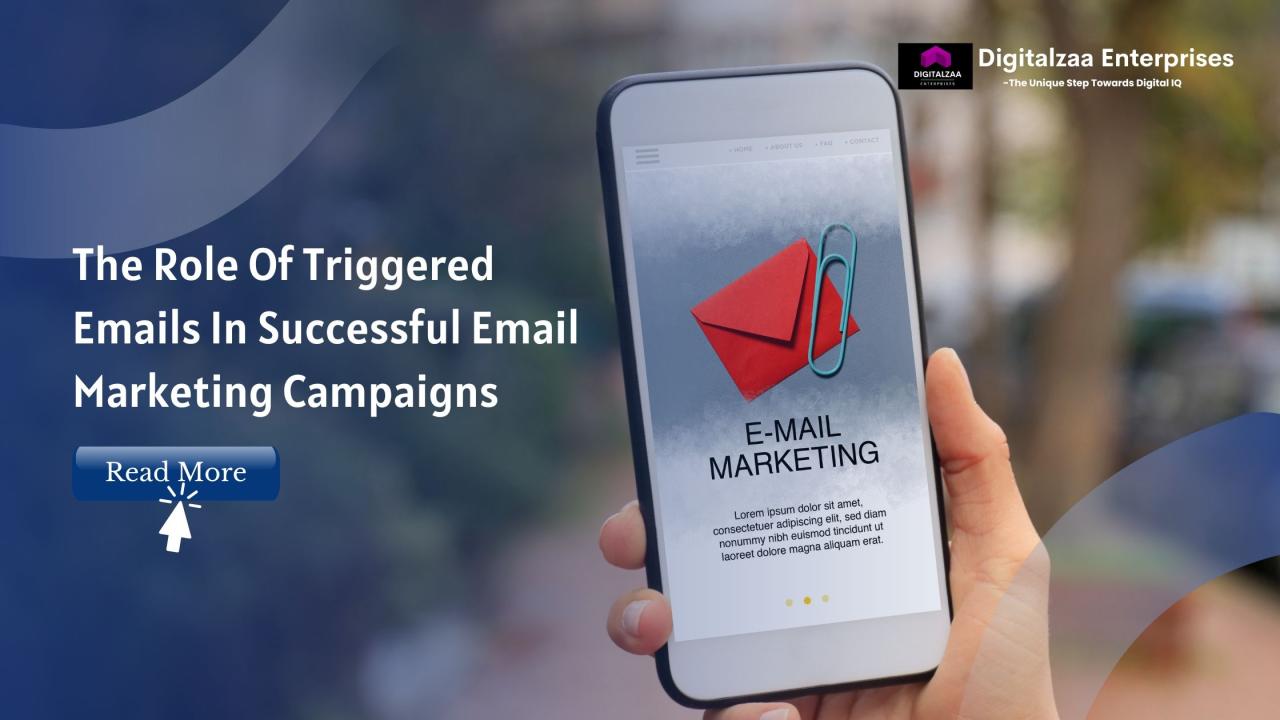
Behaviorally triggered emails are evolving rapidly, driven by advancements in AI and machine learning. This evolution promises to make these emails even more effective at personalizing the customer journey and boosting engagement. Understanding these emerging trends is crucial for marketers looking to stay ahead of the curve and maximize the impact of their email campaigns.The future of behaviorally triggered emails will see a shift towards even more sophisticated personalization, powered by predictive analytics and real-time data.
This will allow businesses to anticipate customer needs and desires, delivering relevant messages at precisely the right moment.
AI-Powered Personalization
AI and machine learning are transforming email personalization. Algorithms can now analyze vast datasets of customer behavior, including browsing history, purchase patterns, and interactions with other marketing channels. This allows for the creation of highly targeted and relevant email campaigns, dynamically adjusting to individual customer preferences. For example, an e-commerce store can use AI to predict which customers are likely to abandon their shopping carts and send a personalized email offering a discount or free shipping.
Similarly, a travel company can use AI to identify customers who have booked a flight in the past and suggest similar destinations or packages.
Advanced Triggering Mechanisms
The triggers for future email campaigns will become even more nuanced. Instead of relying solely on basic actions like abandoned carts or website visits, sophisticated algorithms can analyze subtle cues. For example, a company might send an email to a customer who has recently viewed a specific product on their website but hasn’t added it to their cart, offering an enticing discount to encourage purchase.
Further, a customer’s tone of communication on social media could be analyzed to determine their emotional state and send a relevant email message. Analyzing a user’s search history can also predict future needs and interests, resulting in more tailored email offerings.
Enhanced Customer Segmentation
Future email marketing tools will leverage advanced segmentation techniques, creating more granular and targeted customer segments. This segmentation will go beyond basic demographics, considering psychographics, purchase history, and engagement metrics. The resulting hyper-personalized campaigns will address individual customer needs and preferences, creating more relevant interactions and stronger customer relationships. This means sending emails tailored to specific interests, past purchase history, and even the time of day the customer is most likely to engage.
Integration with Other Channels
The future of behaviorally triggered emails will be increasingly integrated with other marketing channels. For instance, if a customer interacts with a chatbot on a company’s website, the triggered email campaign could seamlessly pick up where the conversation left off, providing additional information or offers. This seamless transition across channels creates a unified and personalized customer experience, making the customer journey more engaging and efficient.
This can lead to a more holistic customer relationship management system, where all touchpoints are interconnected.
Impact on Customer Engagement
These trends will significantly influence the future of customer engagement. By anticipating customer needs and providing relevant information at the right moment, businesses can cultivate stronger customer relationships and drive higher conversion rates. The enhanced personalization and seamless integration will lead to more satisfied customers who feel understood and valued. Companies can foster brand loyalty by delivering consistent and relevant messages that align with the customer’s needs.
Conclusive Thoughts: Why Behaviorally Triggered Emails Are Critical
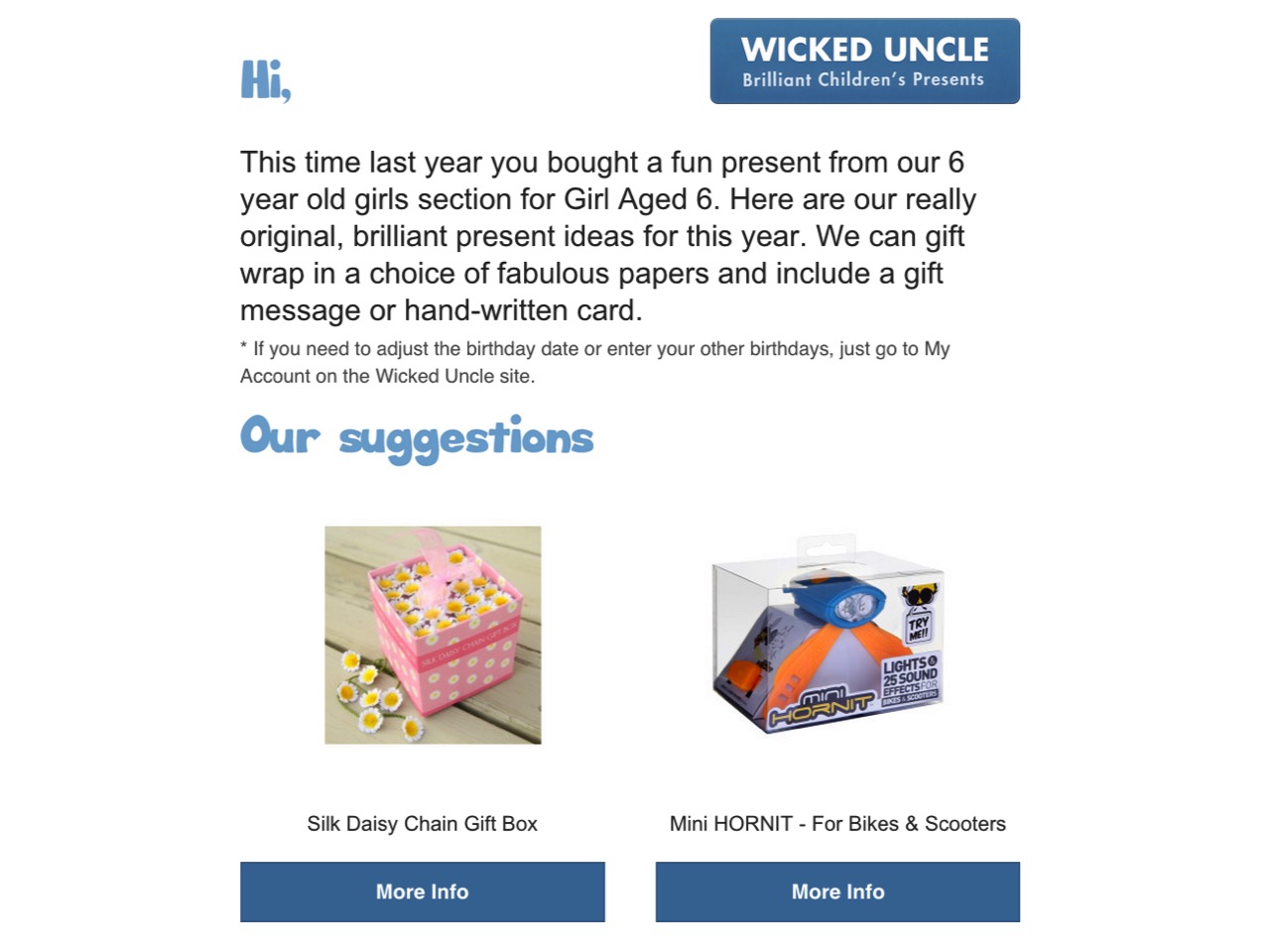
In conclusion, behaviorally triggered emails are a powerful tool for driving marketing success. They go beyond generic messages, providing a tailored approach that directly responds to customer actions. By understanding user behavior, crafting targeted emails, and utilizing the right triggers, marketers can significantly improve key performance indicators. This personalized approach builds stronger customer relationships and boosts overall campaign effectiveness.
Ultimately, behaviorally triggered emails are a critical component of modern marketing strategies, paving the way for more effective engagement and conversion.
